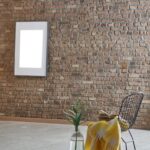The Mayan civilization is known for its rich cultural heritage, advanced architectural structures, and intricate artwork. One intriguing aspect of the Mayan culture is their approach to home decoration. In this article, we will delve into the question: did Mayans decorate their homes? By exploring the layout and architecture of Mayan home structures, understanding the daily life of the Mayans, and delving into the materials and techniques used for decoration, we can unravel the significance of Mayan home decor.
The Mayans were renowned for their elaborate and impressive architectural prowess, creating truly unique and innovative home structures. Understanding the layout and architecture of these homes provides insights into how they may have approached decorating their living spaces. By examining how the Mayans lived on a day-to-day basis, we can gain a deeper understanding of how decorative elements may have played a role in their lives.
Delving into the materials and techniques used for decoration will shed light on the craftsmanship and creativity of the Mayan people. Exploring common decorative themes and unraveling the symbolism behind them will provide valuable insights into the cultural significance of Mayan home decor. Additionally, examining art, pottery, ritual, and spiritual decor will give us a comprehensive view of how these elements were infused into the daily lives of the Mayans.
Mayan Home Structures
The Mayan civilization, known for its remarkable architecture and intricate artwork, also showcased their creativity and skills in decorating their homes. The layout and architecture of Mayan home structures were designed with both functionality and aesthetic appeal in mind.
Mayan homes were typically built with stone or adobe, and they often featured a courtyard or patio at the center of the structure. The layout of the homes varied depending on the social status of the occupants, with elite families residing in larger, more elaborate dwellings.
The architecture of Mayan homes was often characterized by sloping roofs made of thatch or other locally-sourced materials, providing protection from the elements while also contributing to the overall visual appeal of the structures. In addition to residential buildings, Mayan cities also included temples, public plazas, and ceremonial centers that showcased exquisite architectural features.
Decorative elements were an important aspect of Mayan home design, as they served to enhance the beauty of the living spaces while also reflecting the cultural values and beliefs of the inhabitants. Utilizing natural materials such as wood, stone, clay, and plants, the Mayans adorned their homes with colorful murals, intricate carvings, and ornate pottery that added character and charm to their dwellings.
- Examples:
- Colorful murals
- Intricate carvings
- Ornate pottery
Mayan Lifestyle
The daily life of the Mayans was deeply intertwined with their spiritual beliefs, agricultural practices, and social structure. Understanding their lifestyle provides valuable insight into the way they decorated their homes and the significance of these decorative elements.
Agricultural and Domestic Activities
Agriculture was a central aspect of the Mayan lifestyle, with most families engaging in farming to sustain themselves. This connection to the land influenced the way they decorated their homes, as natural elements and motifs were often incorporated into their decor. Additionally, domestic activities such as food preparation and textile production also played a role in shaping the aesthetics of Mayan home decoration.
Social Structure and Community Life
The Mayan society was organized into city-states ruled by kings and nobles, with a hierarchical structure that impacted various aspects of daily life. Their homes reflected this structure, with differences in decoration and size depending on social status. Community gatherings and religious ceremonies also influenced the design of their living spaces, as communal areas were adorned with significant symbols and decorative motifs.
Spiritual Beliefs and Ritual Practices
The spiritual beliefs of the Mayans were deeply ingrained in their daily activities, from household chores to community events. Their homes were adorned with symbols related to their religious beliefs, such as representations of gods and deities, as well as depictions of ritual practices. These spiritual elements infused into Mayan home decoration not only added aesthetic value but also served important cultural and ceremonial purposes.
By understanding the daily life of the Mayans, we can gain a deeper appreciation for the rich tapestry of decorative elements that adorned their homes. The integration of agriculture, social structure, community life, and spiritual beliefs into their decor provides a fascinating glimpse into the intricate layers of Mayan home decoration.
Mayan Decorative Elements
The Mayan civilization was known for its intricate and ornate decorative elements, which were used to adorn their homes. The Mayans decorated their homes using a variety of materials and techniques, showcasing their advanced craftsmanship and artistic skills. From vibrant murals to delicate pottery, the decorative elements used by the Mayans added beauty and symbolism to their living spaces.
One of the primary materials used by the Mayans for home decoration was limestone. They carved elaborate reliefs and sculptures into this versatile stone, depicting scenes from everyday life, religious rituals, and mythical stories. The use of limestone allowed the Mayans to create long-lasting and detailed decorations that could withstand the test of time.
In addition to limestone, the Mayans also utilized vibrant pigments made from natural resources such as minerals, plants, and insects to adorn their homes. These pigments were used to paint intricate murals on walls, depicting images of deities, nature, and significant events in Mayan history. The meticulous attention to detail in these murals showcases the technical skill and artistry of the Mayan people in creating visually stunning home decor.
Furthermore, the Mayans crafted exquisite pottery using clay sourced from local riverbeds. They employed various techniques such as molding, painting, and firing to create vessels, figurines, and other decorative items for their homes.
The intricate designs on these pottery pieces often reflected Mayan cultural motifs and beliefs, adding a touch of artistry and tradition to their living spaces. Overall, the use of limestone carvings, vibrant pigments, and clay pottery exemplifies the diverse materials and techniques employed by the Mayans in decorating their homes.
Common Decorative Themes
The Mayan civilization is renowned for its impressive architectural achievements, advanced knowledge of astronomy, and intricate artwork. In examining the decorative themes found in Mayan homes, it is clear that their designs were deeply rooted in symbolism and cultural significance.
One common decorative theme in Mayan home decor was the use of elaborate geometric patterns. These intricate designs often depicted aspects of nature such as plants and animals, reflecting the close connection that the Mayans had with the natural world. The repetition of these patterns across various forms of decoration, including textiles, pottery, and murals, showcased the importance of nature in Mayan culture.
Another prominent feature of Mayan home decor was the inclusion of religious symbols and imagery. The Mayans held strong spiritual beliefs and incorporated symbols representing their gods and deities into their decorative art. For example, depictions of serpents, jaguars, and eagles were commonly used to symbolize various powerful entities within their belief system. Additionally, hieroglyphs and other written language often adorned their walls, adding an extra layer of meaning to their decorative elements.
Moreover, the use of vibrant colors played a significant role in Mayan home decor. Bright hues such as red, yellow, blue, and green were frequently utilized to adorn walls, textiles, and pottery. These colors held symbolic meanings related to different aspects of life – from fertility to warfare – further enriching the cultural significance embedded within Mayan decorative themes.
| Decorative Theme | Significance |
|---|---|
| Elaborate Geometric Patterns | Reflection of nature’s importance in Mayan culture |
| Religious Symbols and Imagery | Representation of spiritual beliefs and deities |
| Vibrant Colors | Symbolic meanings related to different aspects of life |
By understanding these common decorative themes present in Mayan home decor, we gain valuable insights into the beliefs and values cherished by this ancient civilization. The legacy of Mayan decoration continues to inspire modern design and aesthetics today as people around the world continue to appreciate the beauty and cultural significance embedded within these ornate artworks.
Art and Pottery
The Mayans were known for their intricate designs and craftsmanship, which is especially evident in their art and pottery. These decorative elements played a significant role in the daily life and cultural practices of the Mayan civilization, reflecting their advanced artistic skills and rich creative traditions.
Artistry in Mayan Pottery
Mayan pottery was highly valued for its exquisite craftsmanship and elaborate designs. Artisans used various techniques such as carving, painting, and sculpting to create stunning vessels, figurines, and other ceramic artifacts. The pottery was often adorned with intricate patterns, geometric shapes, and symbolic motifs that held deep cultural significance.
Symbolism in Mayan Art
In addition to pottery, Mayan art encompassed a wide range of mediums including sculpture, painting, and textiles. These artistic expressions often depicted religious deities, mythological creatures, and scenes from everyday life. The symbolism embedded in Mayan art reflects their spiritual beliefs, social hierarchy, and connection to the natural world. The use of vibrant colors and detailed images showcased the sophistication of Mayan artistic traditions.
Influence on Modern Design
The legacy of Mayan art and pottery continues to influence modern design aesthetics. The intricate patterns and elaborate craftsmanship have inspired contemporary artists and designers around the world. From interior décor to fashion design, the rich heritage of Mayan artistry has left an indelible mark on the global creative landscape. By studying the techniques and motifs used by the ancient Mayans, we gain a deeper appreciation for their unique artistic vision and remarkable skill in decorative arts.
By examining the intricate designs and craftsmanship found in Mayan art and pottery, we gain a deeper understanding of the cultural significance behind these decorative elements. The legacy of Mayan creativity continues to inspire awe and admiration for their artistic achievements within today’s world.
Ritual and Spiritual Decor
The Mayans were known for their intricate and elaborate home decorations, many of which were infused with religious and spiritual elements. In fact, the decoration of Mayan homes was closely tied to their beliefs and rituals, reflecting a deep connection between their daily lives and their spiritual practices.
One of the most common decorative elements found in Mayan homes was the use of symbolic imagery related to their religious beliefs. For example, intricate carvings and paintings depicting gods and goddesses, as well as animals and natural elements that held spiritual significance, adorned the walls of Mayan dwellings. These decorations served not only an aesthetic purpose but also a spiritual one, creating a sacred space within the home that was believed to be protected by these divine representations.
In addition to symbolic imagery, Mayans also used a variety of materials and techniques in their home decor that were rooted in their spiritual traditions. Intricately woven textiles featuring symbolic patterns, as well as pottery and ceramics adorned with images of deities and supernatural beings, were commonly used to decorate Mayan homes. These items were often created through ritualistic processes that were imbued with spiritual meaning, making them integral aspects of both the physical and metaphysical worlds for the Mayans.
Overall, the infusion of religious and spiritual elements into Mayan home decoration not only added beauty to their living spaces but also served as a constant reminder of their connections to the divine. These decorative practices have left a lasting legacy on modern design and aesthetics, inspiring contemporary designers to infuse their creations with deeper meaning and symbolism.
| Mayan Home Decorative Elements | Religious/Spiritual Significance |
|---|---|
| Intricate carvings/paintings | Depicting gods/goddesses/natural elements |
| Textiles with symbolic patterns | Weaving techniques rooted in spiritual traditions |
| Pottery/ceramics adorned with deities | Ritualistic creation processes imbued with spiritual meaning |
Legacy of Mayan Home Decor
The legacy of Mayan home decor carries a significant impact on modern design and aesthetics. The intricate designs and craftsmanship of Mayan art and pottery continue to influence contemporary interior decoration, as well as architectural and artistic trends. The cultural significance of Mayan decorative themes and elements has sparked a renewed interest in traditional techniques and materials, inspiring designers and artists to incorporate these influences into their work.
One of the most notable legacies of Mayan home decor is the incorporation of ritual and spiritual elements into modern design. The religious symbolism and spiritual significance of Mayan decorative motifs have found their way into contemporary spaces, highlighting a deep connection to nature and the cosmos. This infusion of ancient traditions adds depth and meaning to modern interior design, creating spaces that evoke a sense of harmony and balance.
Moreover, the impact of Mayan home decor on modern aesthetics can be seen in the use of natural materials and sustainable practices. The Mayans were known for their use of local resources such as wood, stone, clay, and plant fibers in their decorative elements. Today, there is a growing emphasis on eco-friendly design that draws inspiration from indigenous cultures like the Mayans, promoting a more harmonious relationship with the environment.
Conclusion
In conclusion, the exploration of Mayan home decor has provided a fascinating glimpse into the rich cultural and artistic traditions of this ancient civilization. From the layout and architecture of their homes to the intricate designs found in their art and pottery, it is clear that the Mayans placed great importance on creating visually stunning and meaningful living spaces.
The use of materials such as jade, obsidian, and shells, as well as techniques like incising and painting, showcases the incredible skill and creativity of Mayan artisans. The incorporation of ritual and spiritual elements into home decoration also speaks to the deep connection between everyday life and religious practices for the Mayans.
Furthermore, the enduring legacy of Mayan home decor can be seen in its influence on modern design and aesthetics. The symbolism and cultural significance found in their decorative themes continue to inspire artists and designers today. By reimagining the beauty of Mayan home decor in contemporary contexts, we can continue to honor and celebrate the artistic achievements of this remarkable civilization.
Frequently Asked Questions
What Did the Mayan Homes Look Like?
Mayan homes were typically made of mud and wooden frames, with thatched roofs. They often had a rectangular layout with a central courtyard, and each room served different purposes like sleeping, cooking, and storage.
How Were the Exteriors of Mayan Buildings Decorated?
The exteriors of Mayan buildings were decorated with intricate carvings on the walls and facades. These carvings often depicted scenes from Mayan mythology, such as deities, animals, and geometric patterns.
Did the Mayans Have Furniture?
Yes, the Mayans did have furniture. Their furniture was usually made of wood and included items like beds, benches, tables, and chairs. These pieces of furniture were often simple in design but served their practical purposes in the home.

I’m thrilled to be your companion on this exciting journey through the world of home decor and design. With a passion for turning houses into homes and a keen eye for the finer details, I’m here to help you transform your living spaces into beautiful, functional, and meaningful havens.





